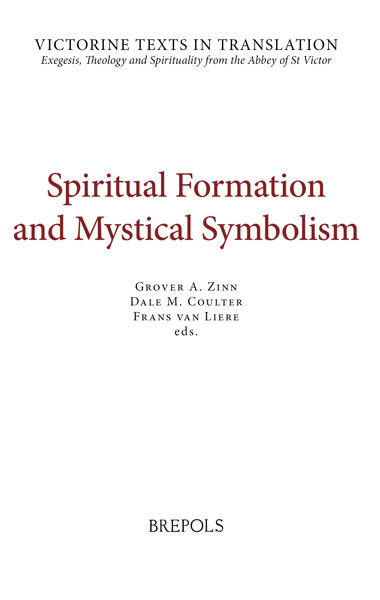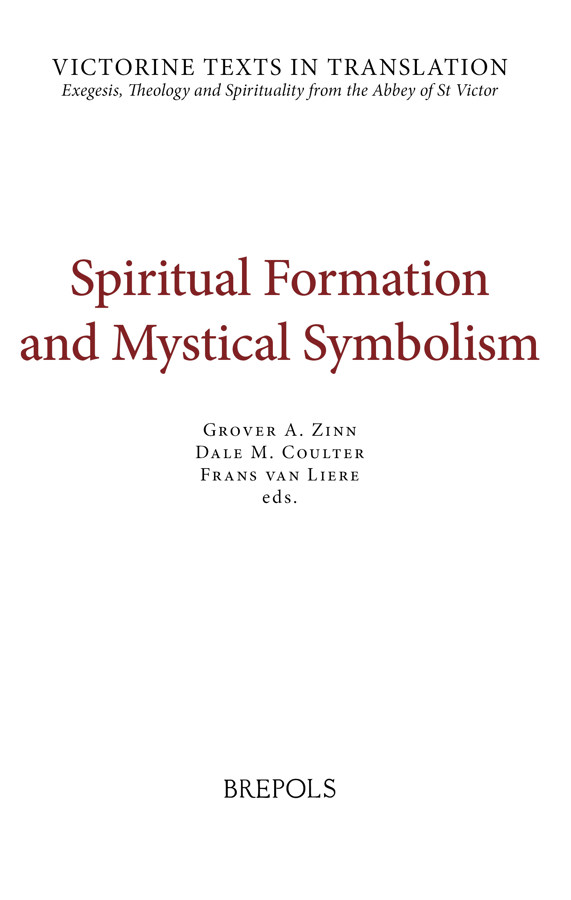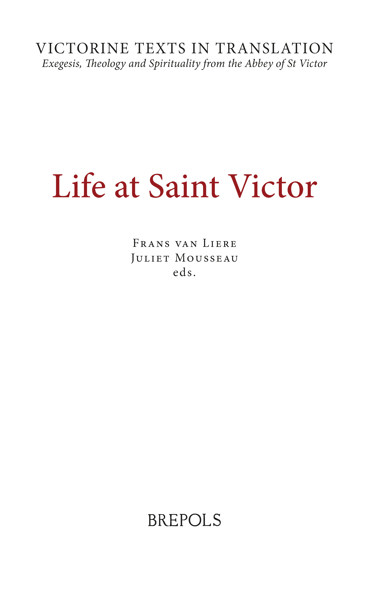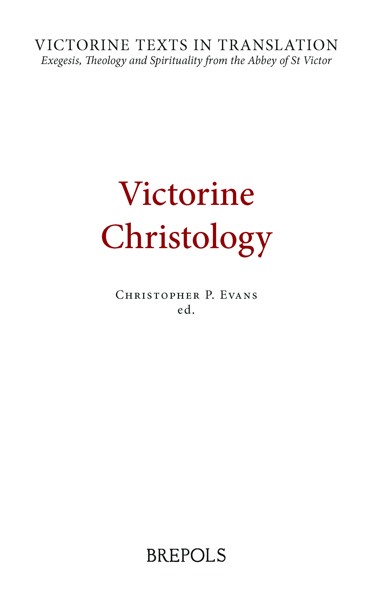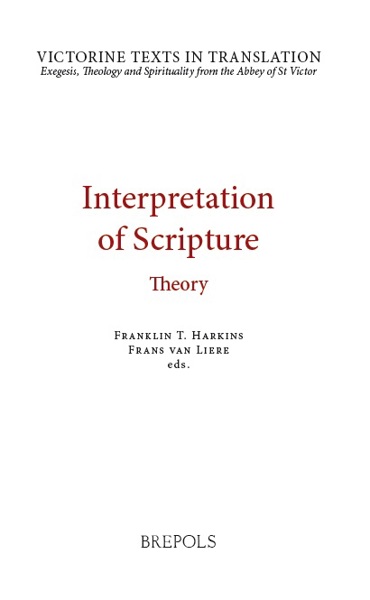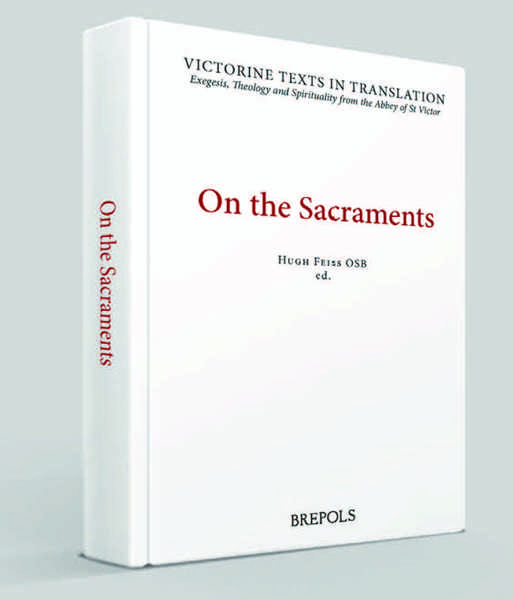
Spiritual Formation and Mystical Symbolism
A Selection of Works of Hugh and Richard of St Victor, and of Thomas Gallus
Grover A Zinn, Dale M. Coulter, Frans van Liere
- Pages: 625 p.
- Size:152 x 229 mm
- Illustrations:1 col.
- Language(s):English
- Publication Year:2022
- € 110,00 EXCL. VAT RETAIL PRICE
- ISBN: 978-2-503-55311-5
- Hardback
- Available
- € 110,00 EXCL. VAT RETAIL PRICE
- ISBN: 978-2-503-57331-1
- E-book
- Available
Key writings on contemplation, symbolism, mystical experience and Biblical images by authors associated with the Abbey of St. Victor, Paris.
“The quality of the binding and presentation are excellent, as we have come to expect from Brepols. (…) The translators are to be congratulated on this fifth volume of the Victorine corpus. As the tenth and final book of this series, it joins its predecessors in making this English-language presentation a classic of Victorine literature.” (Rev. Benedict M. Guevin, O.S.B, in American Benedictine Review 74/3, 2023, p. 343)
"The volume’s strength lies in the synoptic view readers can gain into the program of spiritual formation through symbolism in the Abbey of St. Victor. These are rich texts from some of the greatest theologians of the twelfth and thirteenth centuries which are excellently translated and contextualized by the editors (…). This volume will undoubtedly promote Victorine scholarship beyond French and other European studies as well as stimulate further translations and research in this developing field." (Declan Lawell, in Speculum, 100/1, 2025, p. 253)
Dale M. Coulter (D.Phil. Oxford University) is Associate Professor of Historical Theology, The Divinity School, Regent University.
Grover A. Zinn (Ph.D. Duke University) is William H. Danforth Professor of Religion, emeritus, Oberlin College.
Frans van Liere (Ph.D. Groningen University) is Professor of Medieval History at Calvin University, Grand Rapids, MI.
Biblical interpretation, writings on the contemplative/mystical life and a continuing deep reflection on the nature and meaning of symbols come together in powerful ways in Victorine writers, particularly Hugh and Richard, as well as the lesser-known writer Thomas Gallus (Thomas of Vercelli), a Victorine canon who became the abbot of a house of regular canons in Vercelli, Italy. This volume contains: (1) Hugh’s On the Ark of Noah and A Short Treatise on the Form of the Ark, treatises that unfold Hugh’s teaching on stages and fruition of the mystical quest in relation to a complex drawing that incorporates a figure of Christ seated in majesty, embracing a map of the world on which is superimposed a diagram of Noah’s Ark, representing the 12 stages of the contemplative quest; (2) Richard’s On the Ark of Moses, a work that uses the symbolic (allegorical and tropological) interpretation of the Ark of the Covenant and the figures of the Cherubim that accompany the Ark in the Jerusalem Temple to convey Richard’s vivid and compelling teaching on the varieties of contemplative experience as he understood them in twelfth-century Paris; and (3) Thomas Gallus’ Commentary on the Song of Songs, which offers a window into a formative period of transition in the western Christian spiritual tradition, with Gallus’s commentary on the Song of Songs giving voice to a more “affective” (versus “speculative”) understanding of the mystical quest and experience, drawing upon and extending earlier Victorine explorations of the interrelationship of love and knowing in the experience of contemplation. For those interested in the dynamics of the spiritual quest and symbolic understanding in the twelfth and early thirteenth centuries, as well as insights that can inform the modern quest for knowledge and love of God, these are essential works for any library
Preface
General Introduction, Dale M. Coulter
Hugh Of Saint Victor – Two Writings on the Ark of Noah
Introduction and translation by Grover A. Zinn
Appendix: An analysis of Book Three of the Ark of Noah by Hugh Feiss
A Little Book on the Formation of the Ark
On the Ark of Noah According to the Ark of Wisdom with the Ark of the Church and the Ark of Mother Grace
Richard Of St Victor – On the Ark of Moses
Introduction By Dale M. Coulter, Translation by Ineke Van’t Spijker and Hugh Feiss
Richard Of Saint Victor – Tract on Psalm 28:1–11
Introduction and Translation by Christopher P. Evans
Thomas Gallus – Commentaries on the Song of Songs
Introduction by Craig Tichelkamp, Translation by James Arinello and Craig Tichelkamp
Bibliography
Indices
